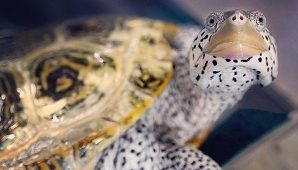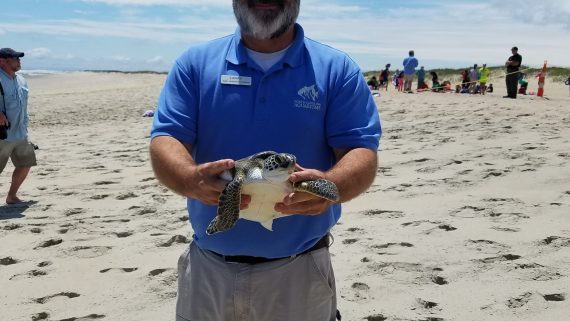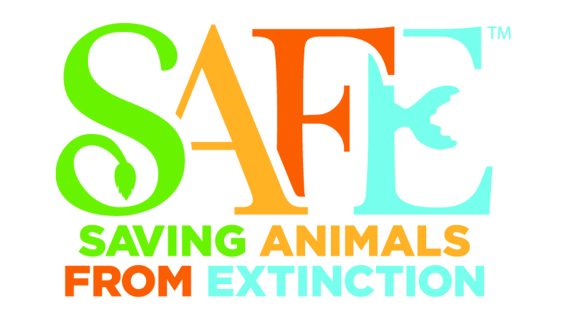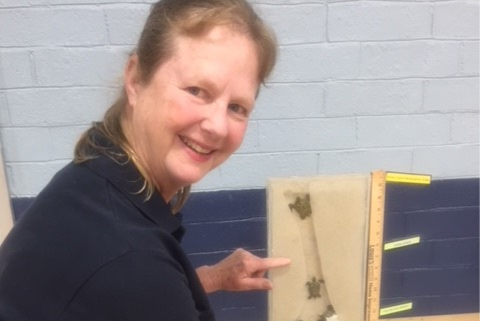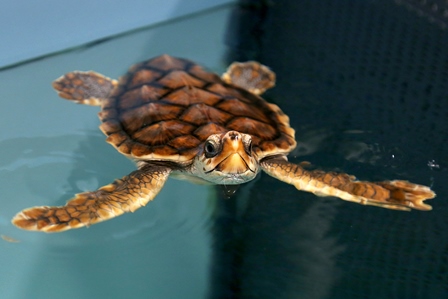New Aquarium Faces
Today we are bringing you a bonus blog post in order to introduce to you our brand new Educator. We are so excited to have Gail join our Education team at the Aquarium:
Hello everyone! My name is Gail and I am the Visitor Experiences Coordinator—a new, full-time Education team member here at the North Carolina Aquarium at Fort Fisher. I will soon be taking over the Sea Turtle STEM curriculum and website and wanted to introduce myself. I’m so happy to connect and chat with you!
Originally from Cleveland, Ohio, I always knew I wanted to work to engage people with our environment and the animals with whom we share it. After receiving my Bachelor’s degree in Environmental Studies, I traveled abroad and worked for various organizations in the Environmental Education field. I decided to pursue more education and received my Master’s degree in Zoology from Miami University of Ohio, before eventually making North Carolina my new home.
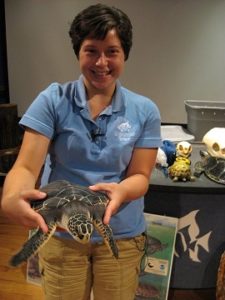
Here I am presenting on sea turtles at the NC Aquarium at Pine Knoll Shores
The ocean is near and dear to my heart, having spent childhood vacations on the coast. I vividly remember examining seashells on Captiva Island, Florida and observing birds in the salt marsh on Hilton Head Island, SC. Those experiences stuck with me and made me gravitate toward a career specifically focused in marine education.
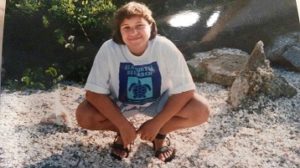
A younger me on Captiva Island, FL wearing a sea turtle research shirt!
Here at the Aquarium, I am happy to facilitate those experiences for other people, whether it is a family on vacation or a teacher looking for engaging professional development. Good experiences with the ocean and marine animals lead to people wanting to protect those animals and where they live. We are all affected by the ocean and we all have an impact on the marine environment, even those of us living far from the coast. It is now more important than ever that we work to protect those natural areas we love. Sea turtles are a great reminder of why we love the ocean and there are some easy ways to help protect them and their home. Skipping single-use plastic items, such as plastic grocery bags, plastic water bottles, and plastic straws, is an effective method of reducing plastic pollution and marine debris. You can use reusable grocery bags and water bottles and skip the straw entirely to help protect sea turtles and other wildlife.
If you are interested in learning more about the sea turtle curriculum and meeting Gail, please join us for our Sea Turtle STEM Teacher Workshop on Saturday, May 6th. You can register online here.
This week, Turtle A is 681 grams and measures 16.4 cm long. Turtle B weighs 991 grams and is 18.1 cm long. Refer back to the table in this post for the turtle’s year-long measurements.


